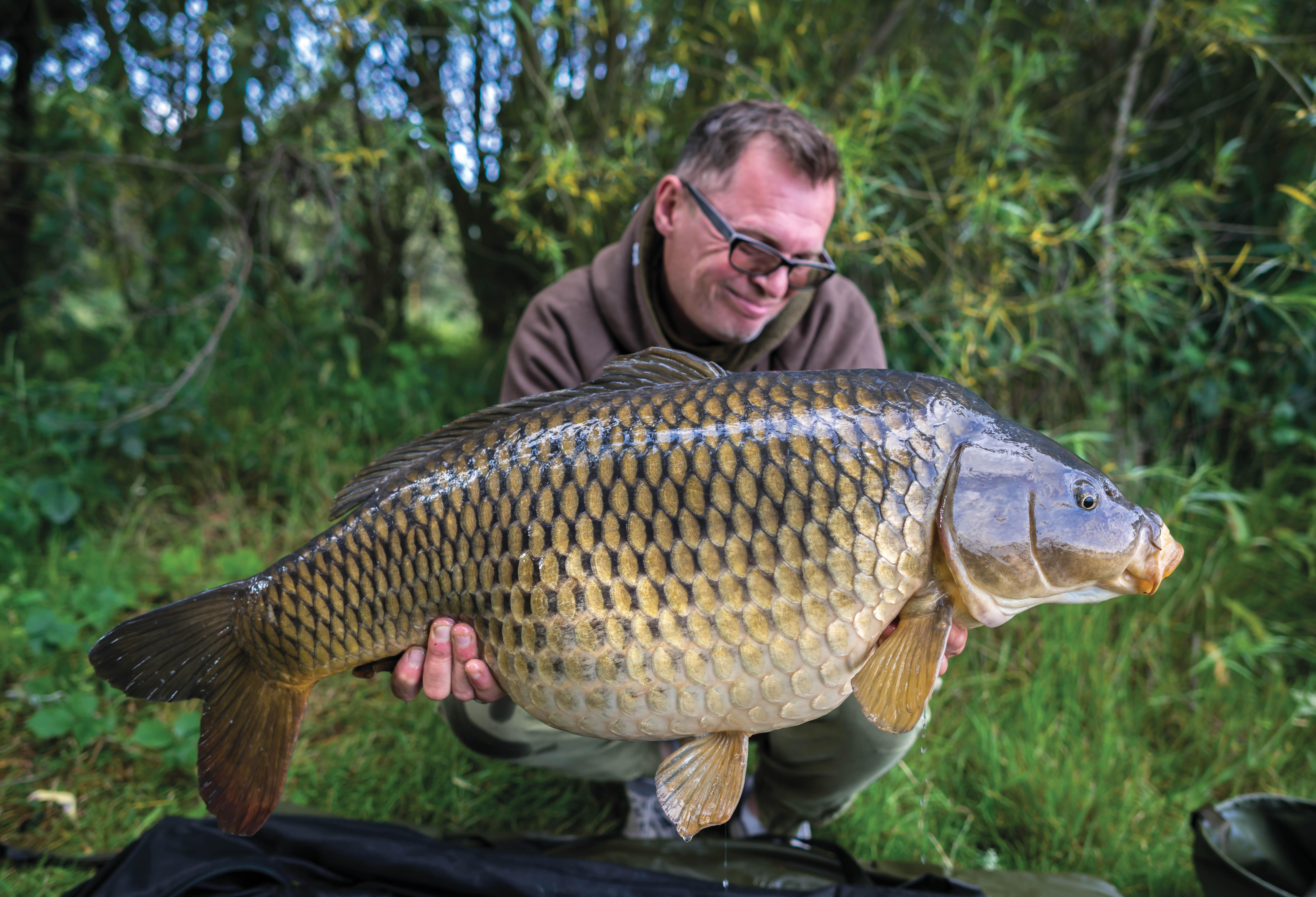The Bag Rig That Pulls Back!
Jon ‘Shoes’ Jones offers up a challenge: how to bring together a time-honoured match tactic, an on-trend carp rig, and that little bag of goodness and attraction…
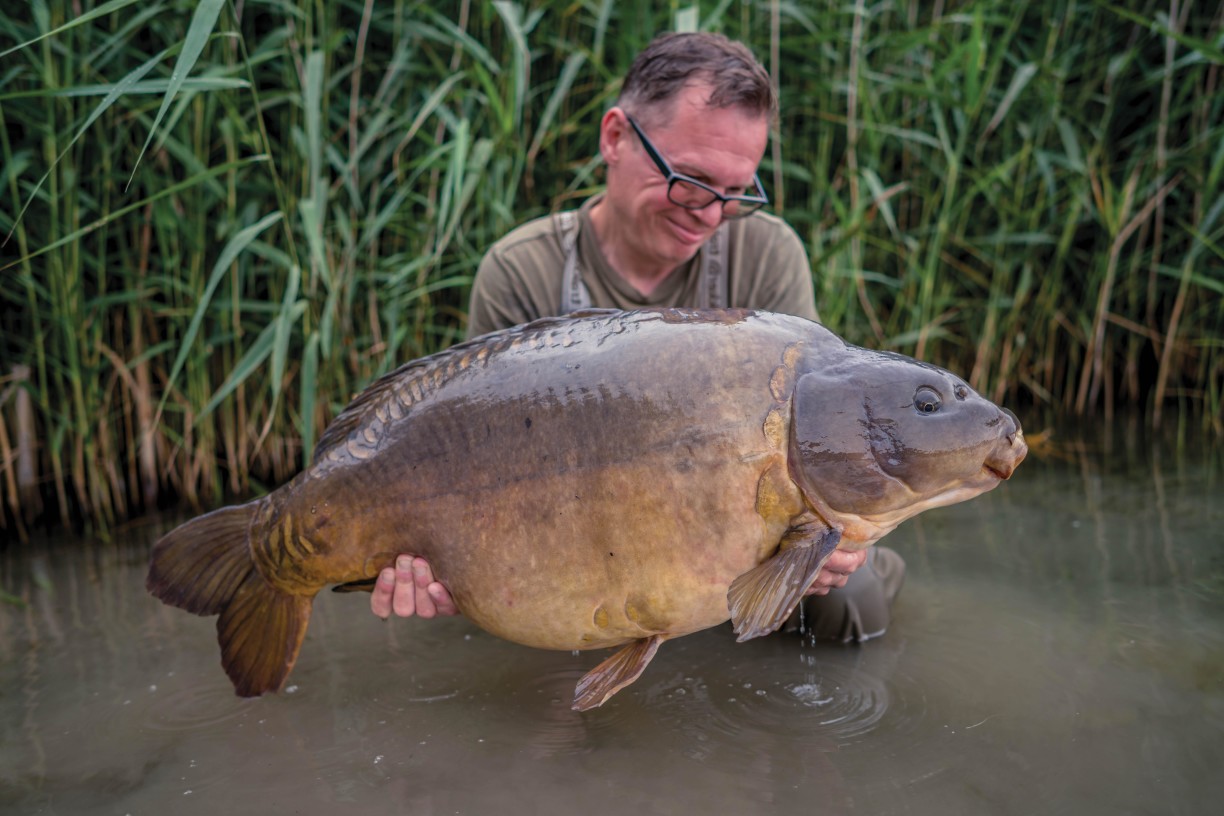
I’ve always been a tweaker of rigs and tackle. Those of you who know me, know that I’m always messing around with rigs. I look for ways to improve them with homemade items, or new developments from companies I have worked with, work which often involves CAD drawings. Some things have worked great, and others not so. This simple tweak, though, we can all do, and it’s something that’s easy to tie.
THE BEST OF BOTH WORLDS
With the growing use of solid PVA bags here in the UK on the rise, I have taken time to look at suitable rigs that could make this method even more effective. One big problem is rig fashion. The Ronnie Rig is in fashion at the moment, and don’t get me wrong, it is a very effective rig and it’s easy to tie. I’ve caught many carp on it, but it is the rig of the moment, and it’s very trendy to be seen using it. Unfortunately, though, a Ronnie isn’t suitable for fishing solid PVA bags… or is it? I’ll explain further…
I’ve spent quite a few years filming match anglers and have always had an interest in the elasticated Method rigs they use. The elastic in these rigs is used as a buffer to stop the hook from pulling whilst carp are being played. With the Method feeder, almost all match anglers use short hooklengths. Thoughts are that using short hooklengths without the elastic’s cushioning effect would result in more lost fish. But the main reason is surely that when a carp sucks up the bait and moves away, the elastic always pulls the hook back, keeping it set in the fish’s mouth. I started to think, then, whether I could include an element of elasticity and cushioning in my solid bag rigs.
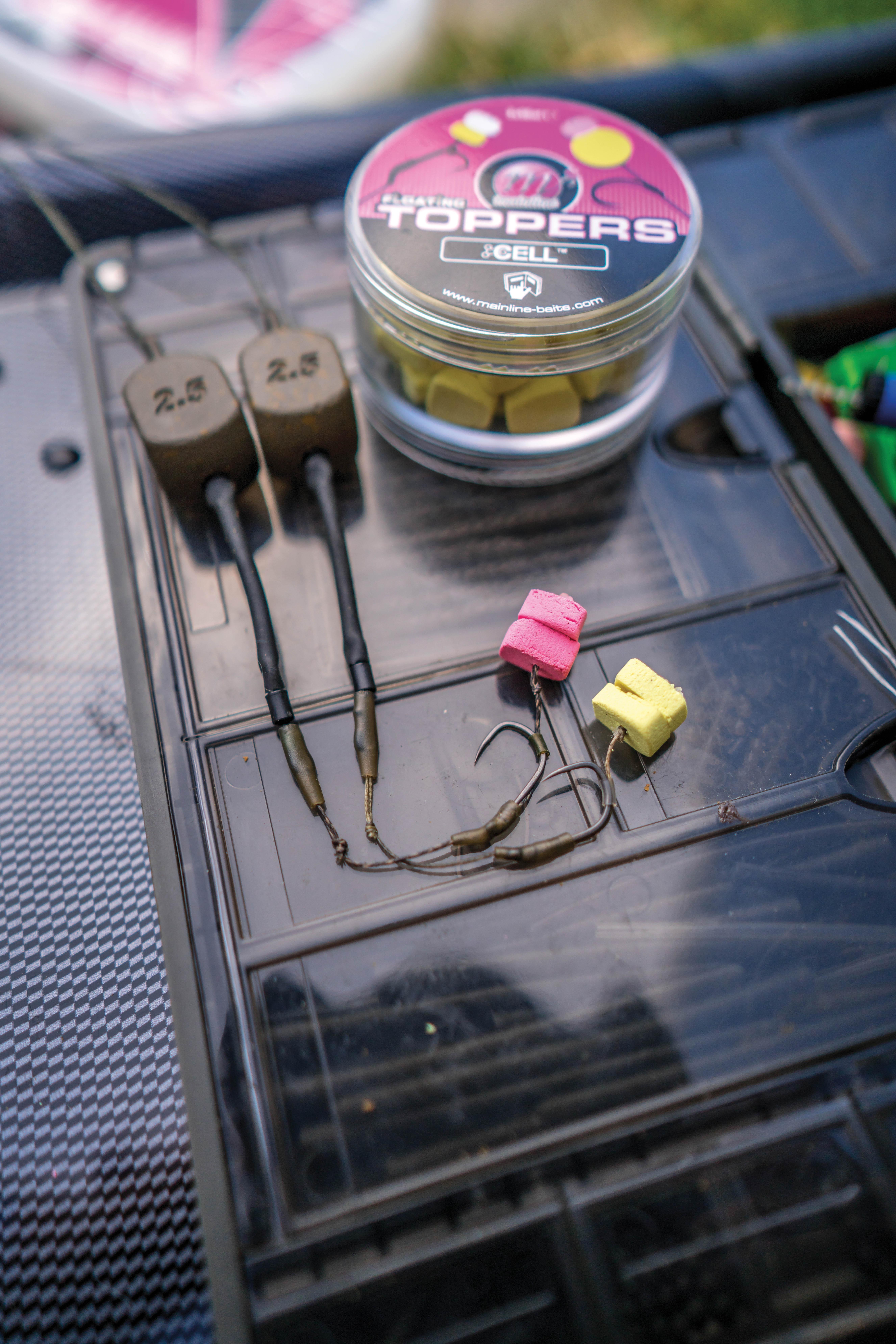
BUNGEE PRINCIPLE
Many years ago, some very clever-thinking carp anglers developed the Bungee Rig, and I remember Steve Briggs talking about it. It consisted of a short length of pole elastic, or elastic tubing pulled over a length of braid which was cut at three times the length of the tubing. A swivel is attached to one end, and the elastic threaded on. A second swivel (quick release) is then attached to the other end, with the elastic stretched over from one swivel to the other, leaving a short, inch-long section with a three-inch length of braided hooklink inside (see photo). When pulled, the elastic stretches until it reaches the braid’s limit, thus forming a buffer section. As mentioned, the carp moves away with the hook in its mouth. Due to the elastic pulling it back, the fish has less chance of shedding the hook. I tried the set-up a few years ago, but not with a solid bag.
The ‘bungee’ section makes up only half the completed rig. The business end comprises a short length of soft braid which is looped at one end, and a size 6 wide gape hook with a kicker and short Hair. The loop is attached to the quick release swivel of the bungee, and covered with a small section of rubber tubing. This completes the rig (photo).
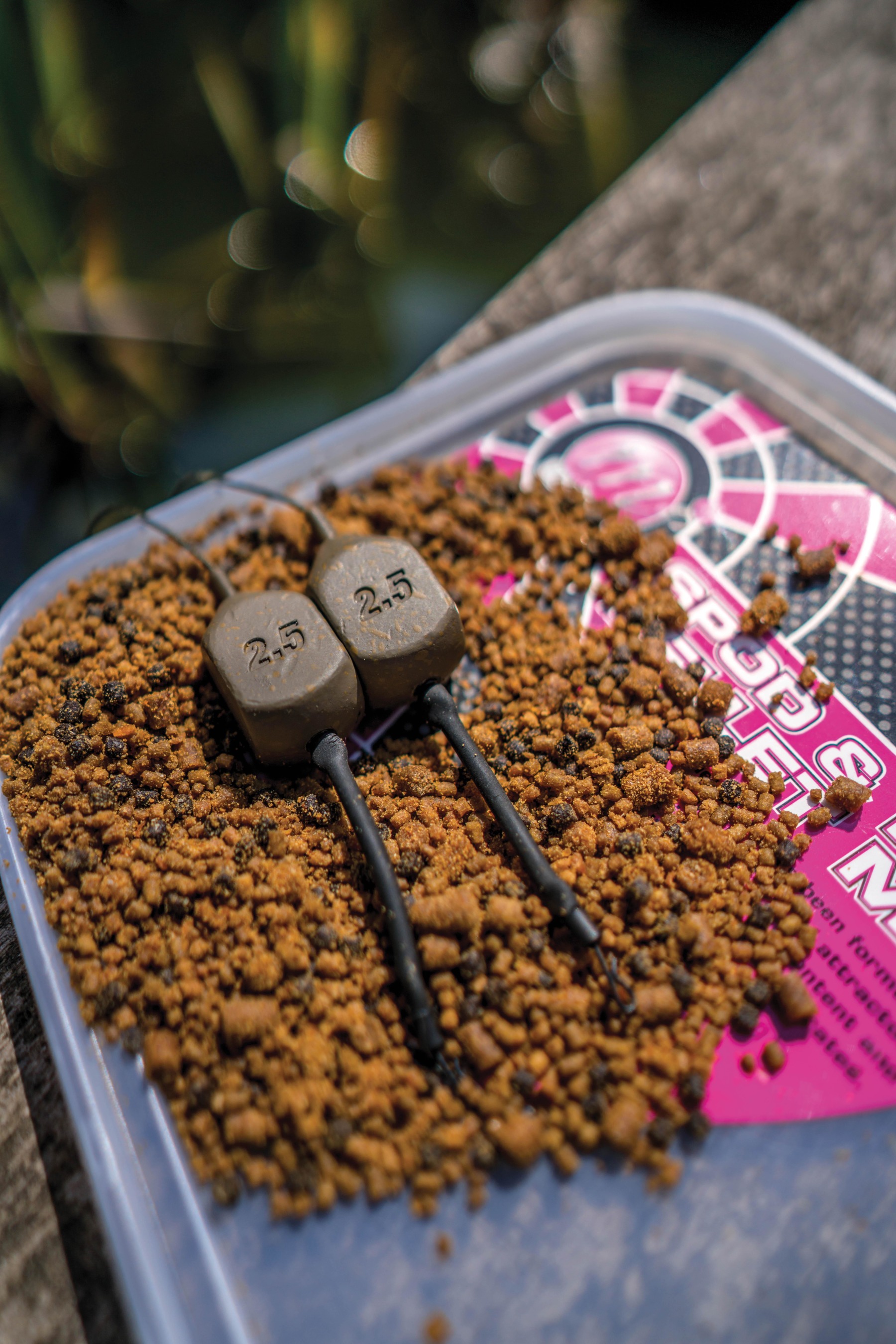
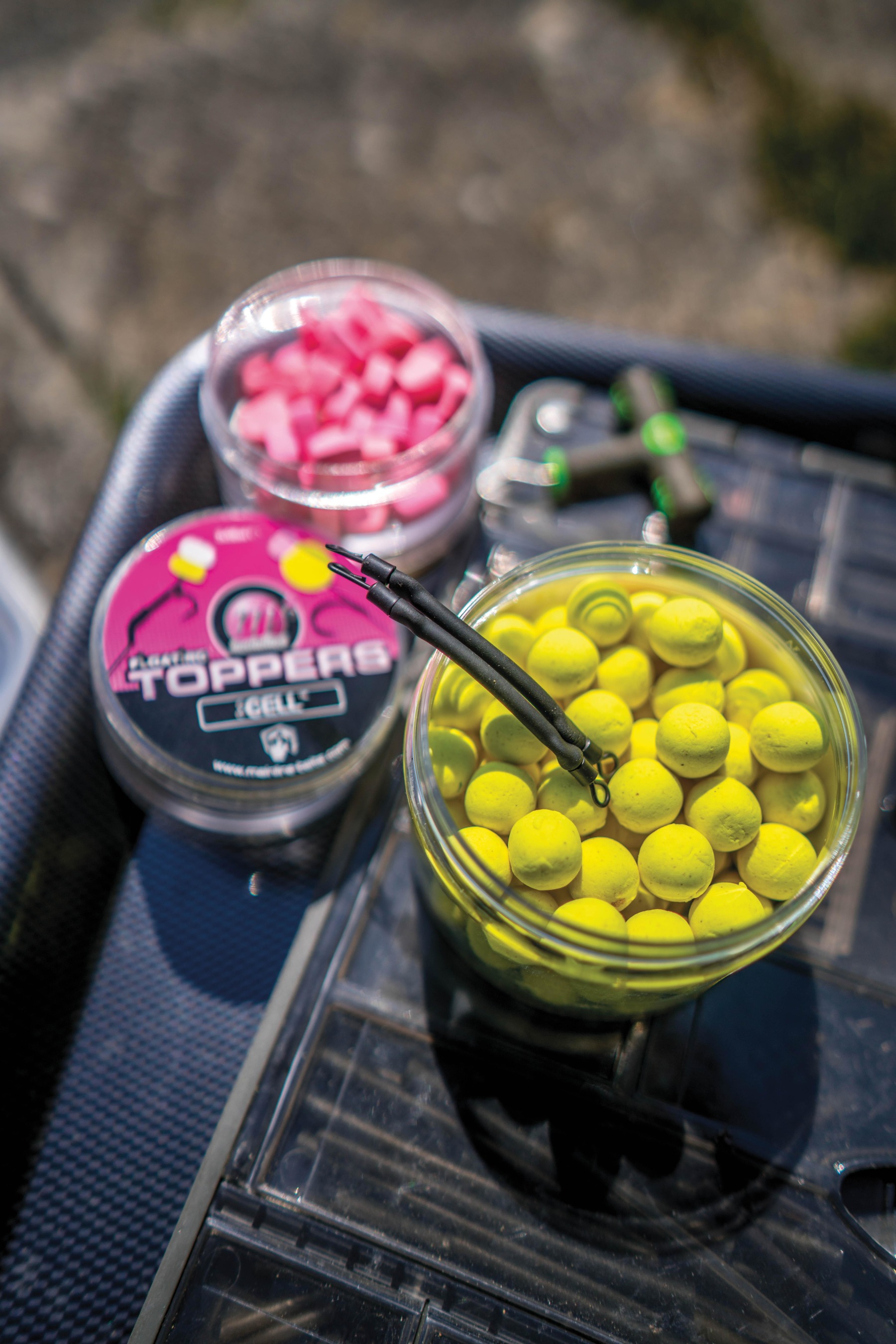
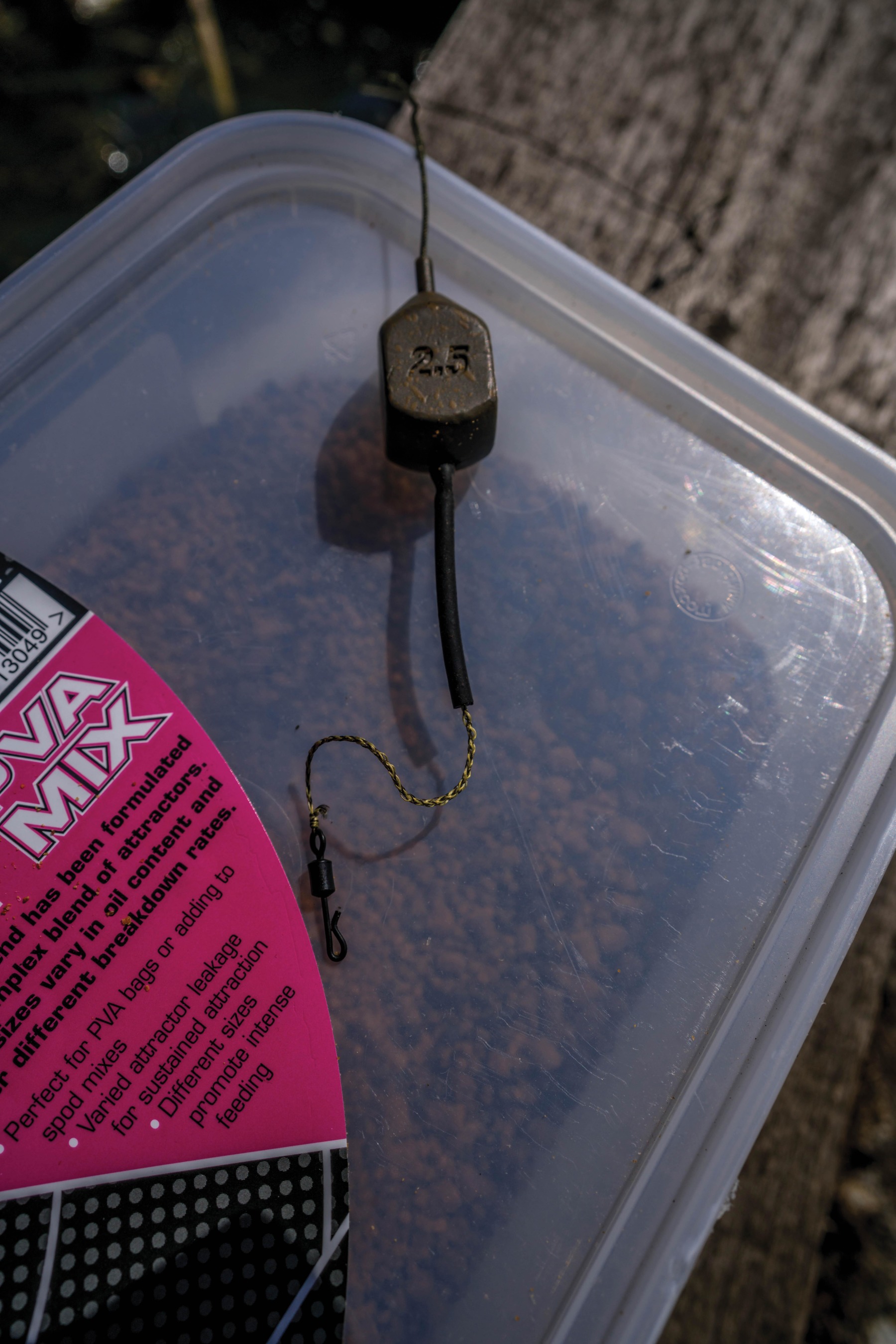
SOLID BAGGING
I’m a big fan of the solid PVA bag. It’s caught everywhere and has a very good catch-rate compared to some other methods. It has both positives and negatives, one negative being the time it takes to make one up—if you don’t cast it to the right spot, you need to change the whole bag and start again. However, the positives outweigh the negatives for a number of reasons. Firstly, the presentation is perfect every time, with no tangles and no fuss. Secondly, you can cast it onto almost anything, and the carp will find it. Thirdly, it presents a nice pile of bait around your hookbait, almost disguising your hooklink and lead. It’s the perfect method for the bungee, but why use this rig in a solid bag?
I like the extra hooking abilities of this rig. As long as you are retaining the lead, the lead can pull free of the hooklink swivel and it will slide up the line when you play a fish. When it slides back down and hits the hooklink swivel, it could, perhaps, adversely affect the hook hold, but given the bungee effect, the effect is reduced. Also, it acts as a shock absorber, and it gives you extra confidence—that reminds me of another set-up I was shown some 10 years back, which also helps to reduce hook-pulls, when using a Chod Rig, and maybe next time, I’ll tell you all about it.
Finally, as I said earlier, the carp cannot move away without the hook pulling back. When the carp shakes its head as it first pricks itself, the bungee effect prevents the hook from coming free easily—something to think about if you’re being done on ‘normal’ rigs.
Earlier, I questioned the Ronnie’s suitability when fishing solid PVA bags. Well, I think the set-up is worth considering, and with a little thought around how the rig sits and how it might attach to the bungee section, it could well prove a winner. I’m sure some clever anglers out there will think of an arrangement that works, and come up with something that doesn’t look too much like something from a scrap metal yard! Let me know if you sort it out.
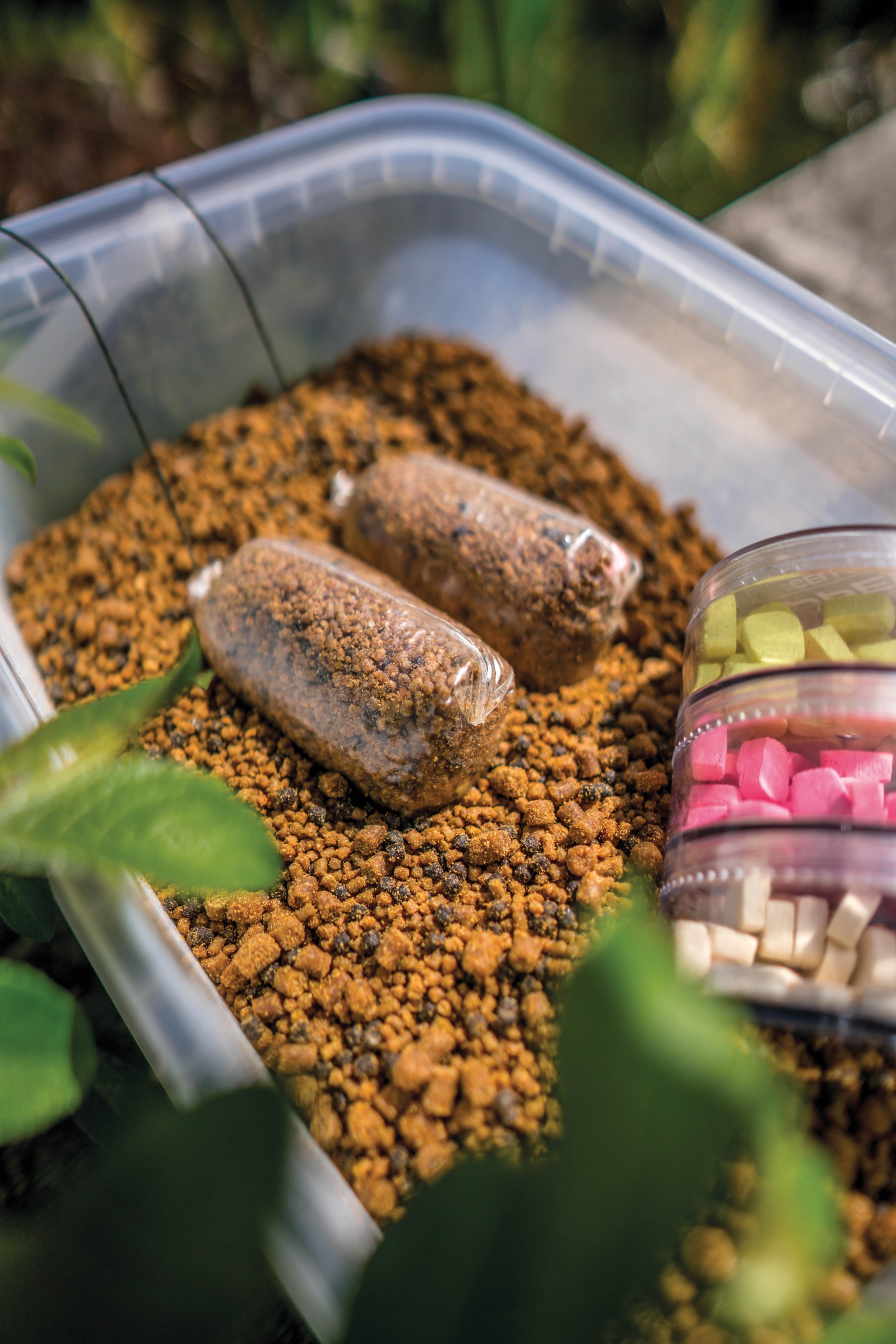
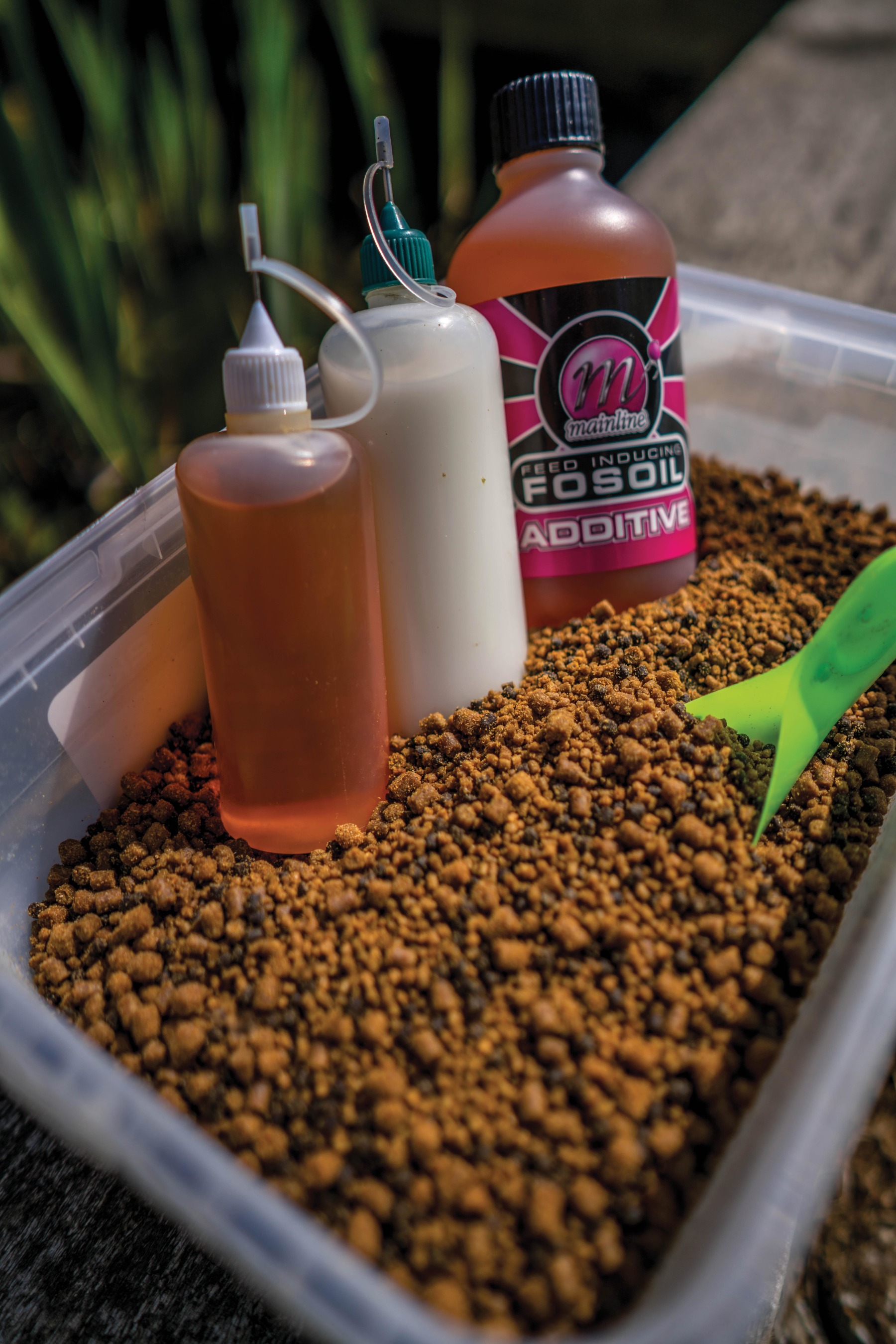
PACKING OUT THE BAG
You might be thinking about what baits to I use with the set-up. I like a selection of small pellets—perhaps the Spod & PVA Pellet Mix from Mainline—with some little added extras from time to time. As ever with solid PVA bags, though, it’s down to personal preference as to what you include. That’s why it’s so appealing, and you can play around with different baits that suit you. As for hookbaits, it’s your choice, but I like to keep them small, and go for 12mm pop-ups, bottom-bait Dumbells or Toppers. The overall secret, is indeed, to keep them small.
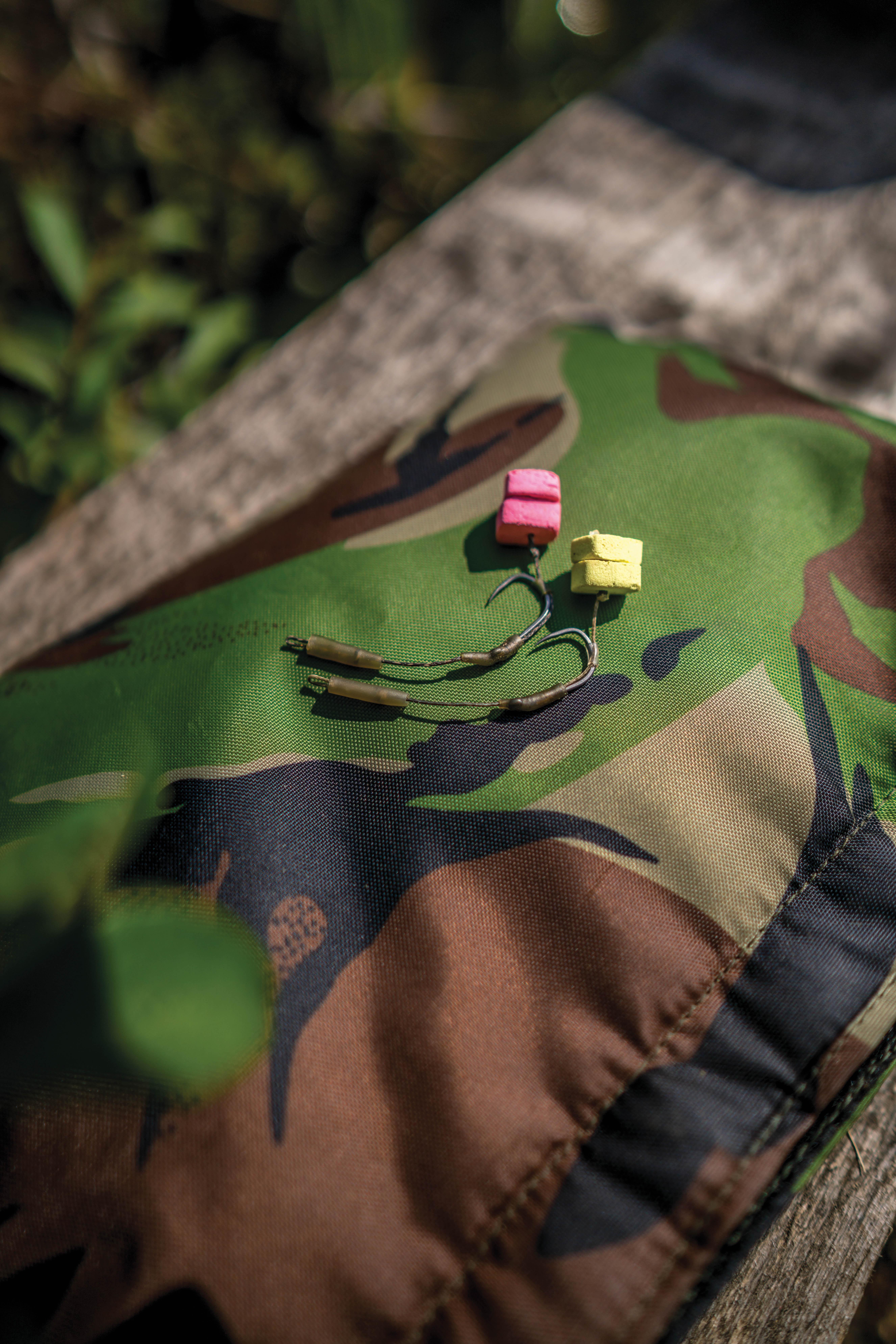
Now I have the rig, the method and the baits sorted, it’s time to put them all together in a bag. Bag size will, once again, be down to you, but if you’re casting, keep them small. If you’re dropping from a boat or bait boat, however, then you can go as big as the bags allow—you can find really large ones if you shop around, especially on eBay. Before you cast, you can add a little liquid food source to the bag for more attraction, by way of an injection of oil or liquid, like Smart Liquid or Fosoil etc. In the past, I have used syringes and needles, but this is obviously a little dangerous. I’ve since found some very nice squeezable bottles with needle tips. These are brilliant for adding liquids to bags (photo). Once done, you’re ready to go.
